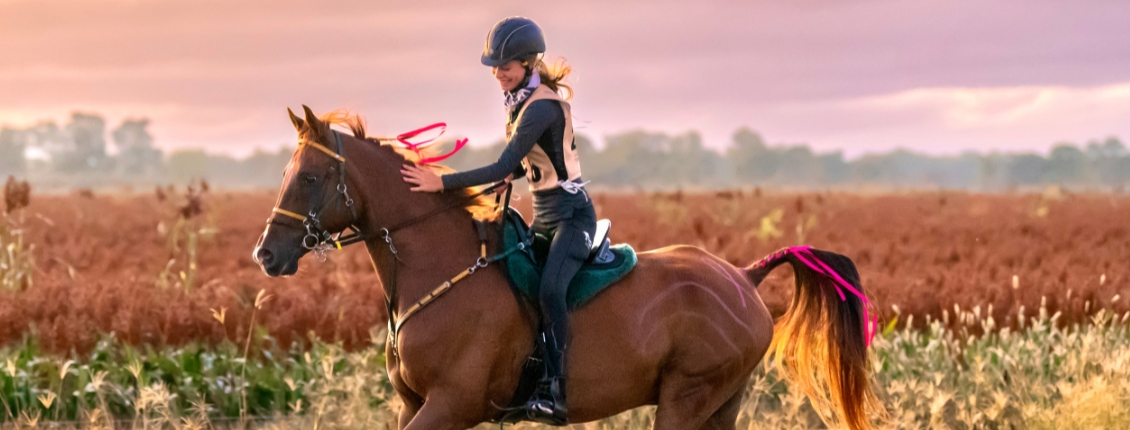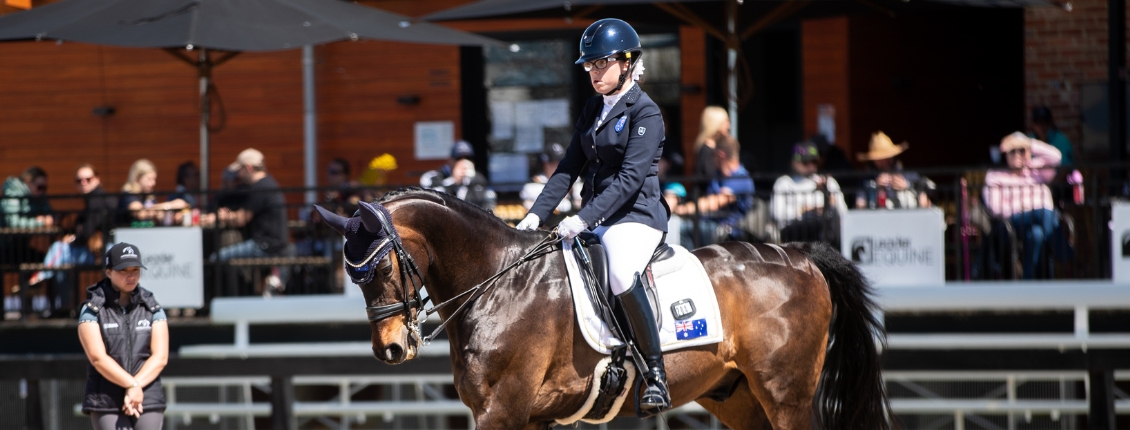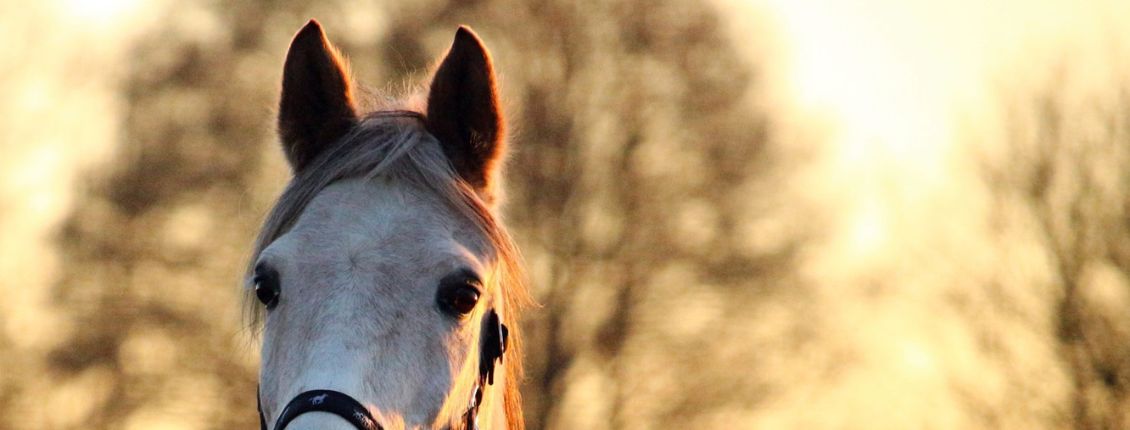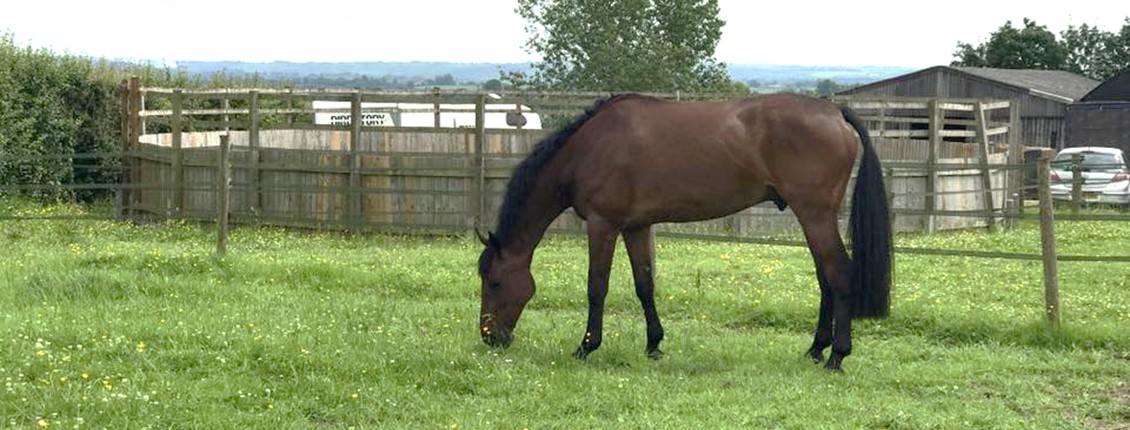
Grass Feeding vs Hard Feeding Horses
The horse evolved to be a grazing animal, “trickle” feeding on grasses for most of the day while on the move. These grasses and shrubs were often not very nutritious, low in easily digestible sugars and starches, and higher in indigestible structural carbohydrates (plant cell walls, also referred to as fibre).
The horse’s long, slow digestive tract developed to deal with this, populated with beneficial bacteria which actually break down the fibre for the horse, producing volatile fatty acids (as well as other beneficial nutrients) which the horse can absorb and use as energy.
Although we humans have bred and selected our domestic horses to be very different from their primitive ancestors in many ways – their digestive system has not changed.
Domestication and modern life do not always leave room for horses to graze pasture as nature intended, and on the other hand, grasses do not always provide enough nutrients for the optimum health and performance of our equine partners. It is therefore important to consider the nutritional differences between diets based on fresh pasture and those on conserved forage (such as hay) and concentrates.
Fresh grass is alive. Like all living things, it mostly contains water (approximately 80%), and its cells are actively photosynthesising (using sunlight to convert carbon dioxide and water to produce glucose and oxygen) and using respiration to convert glucose and oxygen to energy for growth, or storing it for later as starch or fructans.
Fresh grasses also produce many vital vitamins, contain varying levels of proteins, and minerals that are taken up from the soil. Pasture varies not only according to climate and season, but sugar levels can vary from hour to hour.
The dynamic nature of grazing pasture can be a double-edged sword. On one hand, the horse’s digestive system is naturally adapted to this type of feed and continual intake, allowing for good digestive function and healthy gut bacteria, as well as keeping up a constant rate of chewing, satisfying both dental and behaviour needs of the horse.
Seasonal rises in the energy content of pasture in spring typically align with increased energy needs of reproducing horses in nature. On the other hand, domestic horses may work hard consistently throughout the year, even when grass is scarce, with the lack of energy resulting in weight loss, or may have the opposite problem where the energy content of spring/summer grass may exceed the horse’s requirements, resulting in weight gain and the myriad of problems that come with it.
Horses and ponies with insulin dysregulation are particularly sensitive to the variations in sugars and need to be carefully managed to avoid triggering laminitis or excessive weight gain. Along with fluctuations in sugars, mineral levels in pasture can also vary with season. The “spring sillies” seen in many horses may be due to increased energy/sugar levels in the grass, or alternatively, high levels of potassium and calcium in grasses at this time can also impact behaviour.
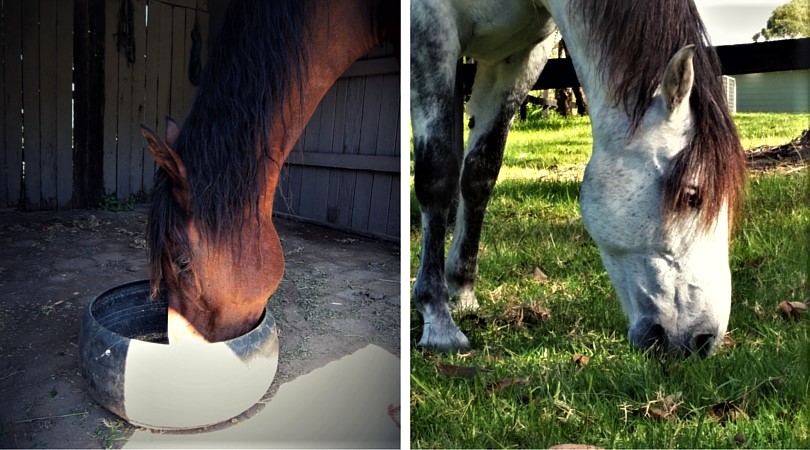
What are the feed factors you need to consider?
Protein quality (i.e. the amount of limiting essential amino acids in the protein) is often lower in grass species compared to legumes, and so horses with higher protein needs (primarily breeding or growing horses) may require additional protein supplements if sustained on grass diets.
Hard fed horses eating conserved forage and other processed feeds allow consistent control of what the horse consumes. Once grass, legumes or cereals are cut and dried, they die, halting all cell activities. Hays, grains and other commonly used concentrates typically contain very little water, with a dry matter content of around 90%.
The availability of fresh water is very important when horses are fed only dry feeds, to avoid issues like compaction colic. Once properly cured, hays will maintain consistent levels of sugars and other carbohydrates, protein, fat and most minerals. This, combined with the ability to add concentrated sources of energy such as grain or fats, makes maintaining weight across workload and season easier.
One big downfall of dried forage or other processed feeds such as grains is that vitamin content declines rapidly once the plant dies, and continues to decrease over time, depending on storage conditions. Horses without access to fresh green pasture may require additional vitamin supplementation, particularly vitamin E, beta-carotene (precursor to vitamin A), some B-vitamins such as folate and vitamin C if the horse is under stress or heavy work (unlike humans, horses can synthesise their own vitamin C, however, this may not meet requirements of heavy work or illness, especially without fresh forage).
Similar to vitamins, beneficial omega-3 fatty acids are abundant in fresh pasture, but decline rapidly when feed is stored, so horses without access to pasture may also require an additional source of omega-3 fatty acids.
When hand feeding horses that do not have access to grazing, it is vital to ensure they have a near continuous stream of appropriate dried forage to keep the gut functioning correctly, encourage the growth of beneficial gut bacteria and reduce boredom and stress in the horse. This is doubly important if the horse is also fed grain meals, as the negative effects of grain (gastric ulcers, colic etc.) are reduced if forage is also fed.
There are clearly many differences between diets based on fresh pasture or not. Living grasses and other plants make for the most natural diet for the horse, however, this may not be appropriate (or possible) for all domestic situations. Relying on conserved feeds provides more control over the horse’s nutrition, especially for horses in heavy work or with special needs, however, requires additional vitamin and fatty acid supplementation for optimal health.
In both situations, it is important to ensure that sufficient roughage is available to keep the digestive tract functional. As with most things, a compromise between the two systems may yield the best results.
Sophie Fletcher, BAnVetBioSci (Hons I), MAnSci








